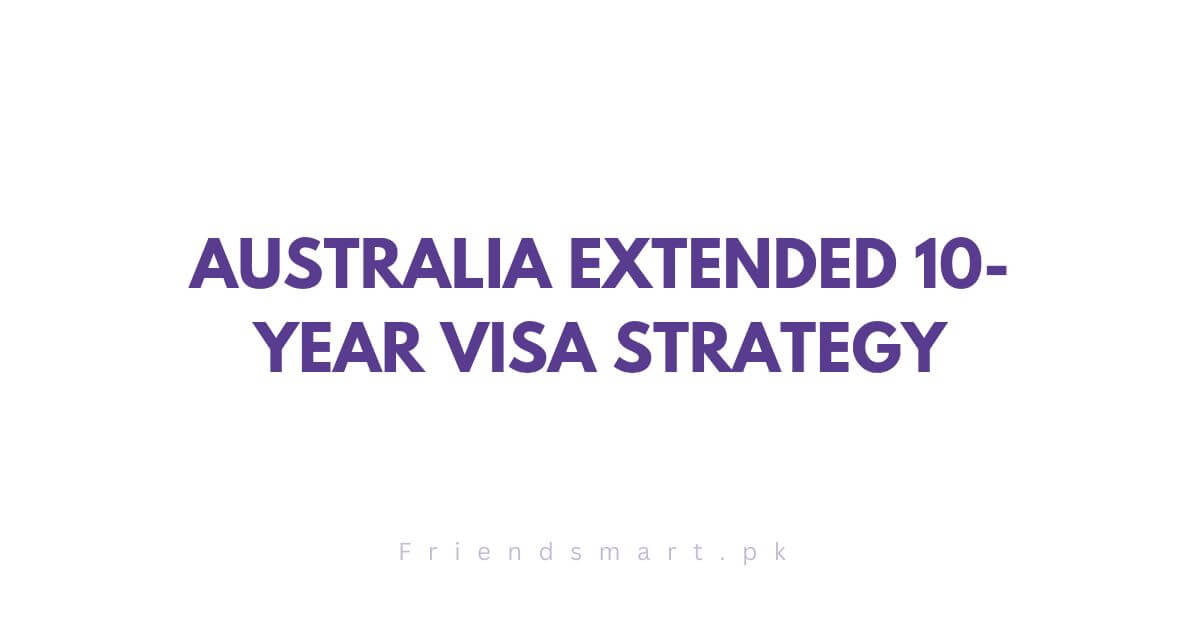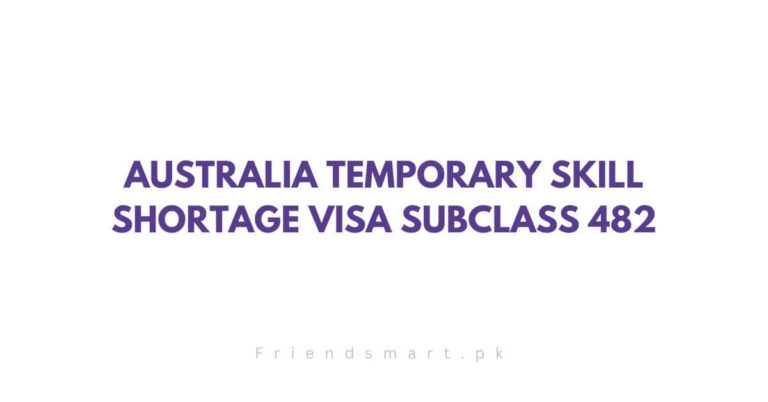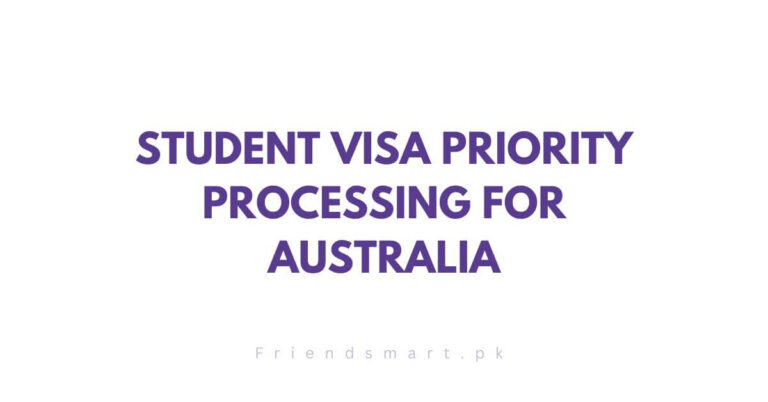Australia Extended 10-Year Visa Strategy 2024 – Visa Update
Australia has expedited employer-sponsored visas for specific occupations. Determine whether you are privileged enough to be employed in these disciplines by continuing to read. The Australian government has declared that employer-sponsored visas in regional areas will be prioritized for the education and healthcare sectors.
In addition, a ministerial directive issued recently underscored the significance of optimizing the visa application process for employers who engage skilled laborers in regional areas of Australia.
Check Also: Australia Temporary Graduate Visa 2024 – A Guide
The Department of Home Affairs asserts that, regarding occupations in Regional Australia, employer-sponsored visa applications are accorded paramount importance in light of the New Direction. Regional businesses in Australia, which continue to face severe skills shortages across all industries and sectors, essentially benefit from this reform.
To address a recognized shortage, the department added that under these visa categories, all jobs in regional Australia would be given high priority.
- Temporary Skill Shortage Subclass 482
- Employer Nomination Scheme Subclass 186
- Skilled Employer-Sponsored Regional Provisional Subclass 494
Additionally, expediting employer-sponsored visas for education and healthcare in regional Australia continues to be prioritized. The department spokeswoman stated that this priority transfer will have a negligible impact on the processing times for the education and healthcare sectors, in light of the reduction in the backlog of visas.
Australia Extended 10-Year Visa Strategy:
How many visas were granted in healthcare and education sectors?
Under the Temporary Skill Shortage Subclass 482 Visa category, the Department of Home Affairs authorized 6,466 visas to social workers and healthcare workers as part of the program to maintain the healthcare industry as the leading applicant pool for permanent and temporary skilled visas.
Furthermore, an impressive 1,060 visas were granted in support of education and training initiatives. In conclusion, the government affirms that invitation sessions tailored to specific industries formed the basis for the issuance of these visas.
4 Important Australia Visa Changes:
Immigration and education policies in Australia are enduring substantial transformations in 2024. These developments hold substantial importance for both enthusiastic students and seasoned professionals who are in pursuit of prospects in Australia.
This article will elucidate notable modifications to Australian immigration visas that are scheduled to be implemented in March 2024. These changes are intended to optimize visa processes, redirect international student pathways, and regulate immigration quotas.
1. Update to Australia AC Skill Assessment
In light of the recent update announcement by the ACs Talent Assessment Authority in March 2024, the Australian government intends to amend the ACs legislation. Individuals who are data scientists or IT engineers with aspirations to relocate to Australia should be cognizant of this novel legislation, as it stipulates the implementation of the new AC’s migration skills evaluation.
The revised assessment application platform will provide enhanced assistance to applicants and streamline the evaluation procedure. AC has recognized the need to streamline and accelerate the process of assessing the migration skills of newly hired candidates. Enhanced guidance will be provided throughout the application process, and the streamlined procedure will expedite the delivery of results for applications that have already been submitted.
2. Age Limit Reform for Australia 485 Visa
The 35-year-old age restriction for 485 visas will formally go into effect in the middle of 2024, the government has announced, adding that additional information will be made available before its implementation. The proposal to lower the age requirement for the 485 temporary graduate visa from 50 to 35 is an exceptionally contentious and worrisome proposition that has dissuaded a considerable portion of the population.
If you are pursuing a 485 Visa and intend to study in Australia, or have already begun doing so, you should remain informed of any additional developments concerning this modification. This discrepancy exists due to the proposed amendment by the government to reduce the age requirement for skilled migration PR visas from 45 to 50, which is the age requirement for 485 visas.
A substantial ten-year lag would exist between the ages of 35 and 45 under the newly proposed age restriction of 35 for the 485 Visa. This exceeds the minimum age requirement for qualified migration visas. Due to the extension of the 485 Visa’s duration to two to three years, the age range of 42 to 45 would be more suitable.
Furthermore, the government is making an effort to tackle the issue of persistent temporariness, commonly referred to as VISA hopping, whereby an individual’s 485 Visa expires with no further immigration alternatives available to them.
3. Extension of the 10-year Frequent Traveler Visa Scheme
Timor-Leste and other eligible nations are being considered for inclusion in Australia’s 10-year Frequent Traveler Visa program. As a result of the expansion, Southeast Asian travelers may soon be able to take advantage of Australia’s long-term visa program, which permits unhindered travel for a maximum of ten years to boost the country’s tourism industry.
Furthermore, to foster investor and commercial relations, Australia intends to shorten the period required to obtain a business visa from three to five years. Initially, China was granted permission to visit Australia under the 10-year visa program.
Due to their visa-free travel policies, a significant number of Chinese travelers are choosing to visit neighboring Southeast Asian countries such as Thailand and Malaysia to gain access to the substantial population of the world’s second-largest economy. Thus, Australia is deprived of the opportunity to travel to China.
4. End of 2-year Extension of Post-Study Work Rights
International graduates have been granted an extension of their employment privileges after they studied for more than a year. This provision grants them an extra two years of validity on their temporary graduate visa, contingent upon the attainment of their degree in a discipline where there are observable deficiencies in skills.
In light of Australia’s changing economic climate and the migration plan’s additional considerations, the extension has been reevaluated. As a result, as of mid-2024, individuals who have completed higher education programs abroad will not meet the eligibility criteria to apply for the extension.
Continued eligibility for the temporary graduate post-study employment stream is contingent on international graduates possessing an Australian qualification and satisfying the Australian study requirement. If you have any further inquiries regarding this modification, kindly contact the Department of Home Affairs.
Frequently Asked Questions:
-
Can an Australian visa be extended?
To extend an Australian visa, you have to apply for a new visa. However, not every visa will allow you to apply for a new one if you want to stay longer in Australia. You must check the visa conditions, as they were set when your visa was issued.
-
How do I extend my Australian visa?
If you want to stay longer in Australia, you will have to apply for another visa. This may be another visitor visa or another substantive visa. These may include temporary visas such as a work visa (Subclass 482) or a student visa (Subclass 500).
-
What is the new 10-year parent visa in Australia?
A parent must be outside Australia for at least 90 days before being eligible to apply for a further sponsored parent (temporary) visa. A parent will be able to hold visas for up to a total stay in Australia of 10 years, reflecting that the visa is a temporary visa and does not lead to permanent residence.







